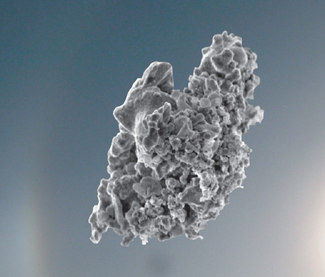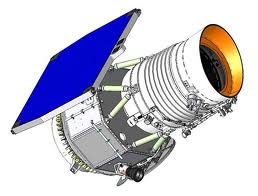Astronomers report capturing a rare view of an on-going eruption of dust in a dying star. WISE mission data combined with prior sky survey observations, were key to this discovery, which could give new insight into a fleeting phase of stellar evolution as it occurs.
It's spring time. Do you have spring cleaning blues? No matter how much you clean, just can't get rid of the dust? Where, oh where, does all the dust come from?!
The answer is: from the stars themselves.
The universe is actually quite a dusty place. Molecules containing heavy elements agglomerate to form dust grains finer than a human hair [1]. These are commonly present in the vast apparently-empty spaces between stars, and contain elements such as Silicon, Oxygen and Carbon - all found in beach sand on Earth and in hydrocarbons in our everyday lives.
Just as atmospheric dust can render sunsets red, cosmic dust absorbs and scatters light from stars. If there is enough dust, starlight can be completely blocked out. Only telescopes capable of detecting infrared radiation from the glow of dust warmed up by the absorbed starlight can then reveal the details of what lies behind.
As stars near the end of their lives, their outer layers expand rapidly and cool. Once cool enough, molecules are able to coagulate and grow, resulting in formation of dust which then disperses throughout space [2].
At least, this is what theory tells us. But catching such a process in action in any one star is difficult. This is because such dust expulsion events are thought to occur only once every 10,000 years (or even less frequently) for most stars. And the events themselves last only the 'blink of an eye' in terms of cosmic time, perhaps a few hundred years or less.
Now, astronomers appear to have caught just such an on-going event. In 2010, NASA's WISE mission provided the most detailed look of the entire sky in the infrared. By comparing the WISE data with an earlier survey carried out using NASA's IRAS satellite, we spotted a previously-unknown star which has brightened enormously in the infrared since 1983 [3].
In a study to be published in The ApJ Letters (almost accepted), we suggest that the central star may have been in the latter stages of its life cycle. It underwent a dramatic eruption causing it to blaze about 100-fold brighter than before. The resultant pulse of energy pushed out the star's outer layers, which expanded, cooled and formed dust. We were able to pinpoint (to a good approximation) the period when the dust was created, by using data from the 2MASS infrared survey carried out in the late-nineties from ground-based telescopes. This occurred sometime between late-1996 to mid-1998. The WISE data show that the dust has continued to evolve since then, with the star now hidden behind a very thick veil. The mass of dust could equal that of the entire Earth.
The combination of large sky surveys was crucial to this discovery. WISE has provided us an astronomical 'treasure trove' of data ideal for picking out rare objects from amongst hundreds of millions of detections. Making such serendipitous discoveries is very exciting. But it also means that the much follow-up work must be done to confirm the nature of this unique star. This follow-up work is only just beginning, and we should know more about the star within the coming years.
Our present understanding is that such dust eruptions are very rare, occurring just a few times in cycles of 10,000 years or so during the late life of a star. Only a handful of other stars are suspected to have undergone similar events in the recent past, and our newly-discovered star could be the first of its kind to be caught in the act. It will be key to understanding this late phase of stellar evolution.
So, next time you need someone to blame for all that dust, you can blame the stars themselves!



